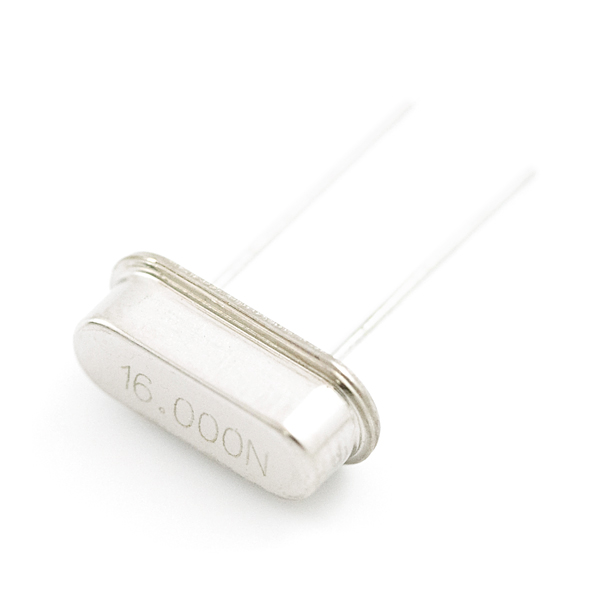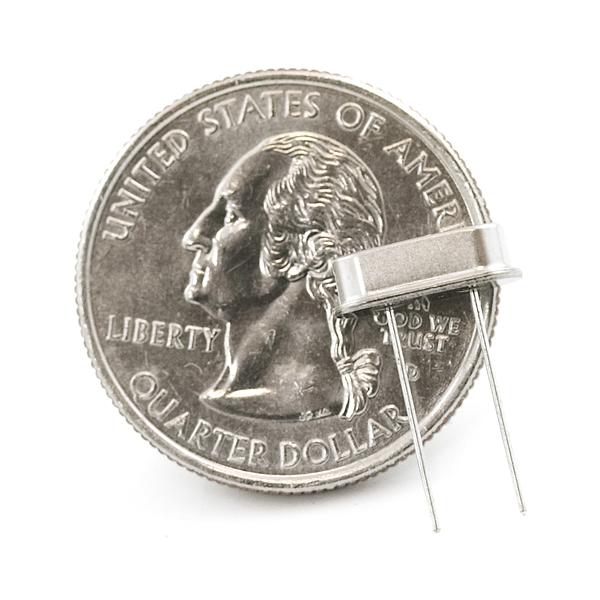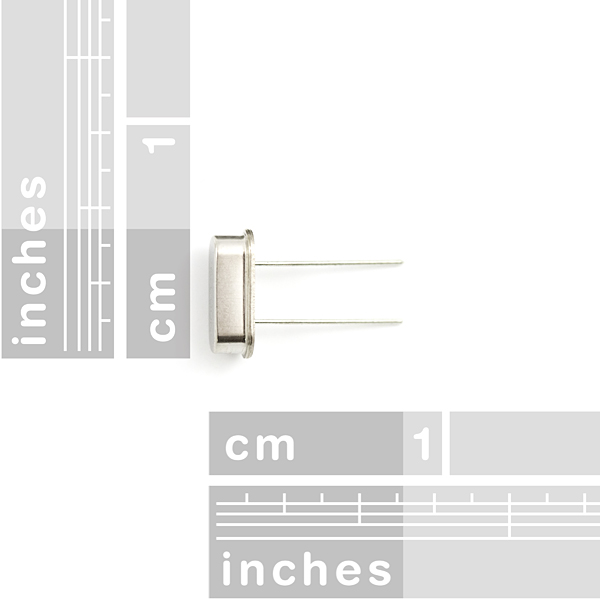Crystal 16MHz Product Help and Resources
Core Skill: Electrical Prototyping
If it requires power, you need to know how much, what all the pins do, and how to hook it up. You may need to reference datasheets, schematics, and know the ins and outs of electronics.
Skill Level: Competent - You will be required to reference a datasheet or schematic to know how to use a component. Your knowledge of a datasheet will only require basic features like power requirements, pinouts, or communications type. Also, you may need a power supply that?s greater than 12V or more than 1A worth of current.
See all skill levels
Comments
Looking for answers to technical questions?
We welcome your comments and suggestions below. However, if you are looking for solutions to technical questions please see our Technical Assistance page.
Customer Reviews
No reviews yet.




Looking at the Arduino schematic I see they use a large 1M resistor in the simple oscillator circuit. On others from Sparkfun the resistor is omitted. I’ve looked on the web for about an hour, can someone comment on the reason for the resistor. Thanks
I noticed that as well but since this hasn't been answered in 3 years I doubt it will be at all.
Thankfully, there's still the internet - there's several sites that explain its most likely use, but I'll citeto Mike@Adafruit's explanation;
This is not at all what that resistor is for. The phase shift arises from a single capacitor in the feedback path of the oscillatory circuit. The second capacitor exists for reasons relating to RF reflection that I will admit I do not understand enough to explain. The feedback resistor is in place for biasing the internal amplifier. The circuit is inherently unstable and will oscillate.
Yes, I am wondering the same thing!
Wow! I just did the math... it comes out to about +/- 3.12ps (for +/-50ppm)! That's 3 trillionths of a second. And for comparison: light can travel ~1mm in that time.
Wow! My jaw just dropped to the floor.
Best crystal to use with a ATMega 328.
Is there a datasheet for this?
Is there a datasheet for this?
Is the load capacitance of this Crystal 20pF? If so, wouldn't it need 2, 30pF, caps, rather than the 22pF that people are recommending?
What type of output do these have? I need a square wave oscillator with 50% duty cycle. Would I need an inverter circuit with this crystal to accomplish this? Other implementation?
You need a crystal oscillator circuit to work with these. Most microcotrollers already have the circuitry in them, they just need the eternal crystal to set the timing.
My question is: which part is right in Eagle file? HC49US or HC49U-V? Thanks.
BTW, I've used this on my arduino breadboard version. Perfect! I used 22pF capacitors for it.
Never mind. It says HC49/US in description.
Where did you find the HC49/US in Eagle? I can't find it at all. I see HC49/S and HC49U but they are different.
Search for that exactly HC49US it is in the sparkfun eagle footprint library.
what does the letter at the end of 16.000 (ex 16.000N in the picture) indicate? I have two 16MHz crystals in my possession, one says 16.000N and the other 16.000R...and I can't figure out for the life of me what it means or if I should even care
The datasheet doesn't specify marking codes, so we don't know. It may be a date code, temperature rating, etc.
I found this but was it the right one?
These are great with Atmega328 :)
But a datasheet would be nice, anybody know where to find it?
Do these come with the matching capacitors? If not, do you sell them separately? I looked around but couldn't find them..
A bit late, but you have to buy the 22pf load caps separately.
They are one of the first thing under Components>General
How many do I need? Please reply quickly, as I need to order some things soon...
2 caps per crystal.
Darn! I only ordered one! Guess I'll have to drop by the local RadioShack soon...
never mind
what is the load capacitance?